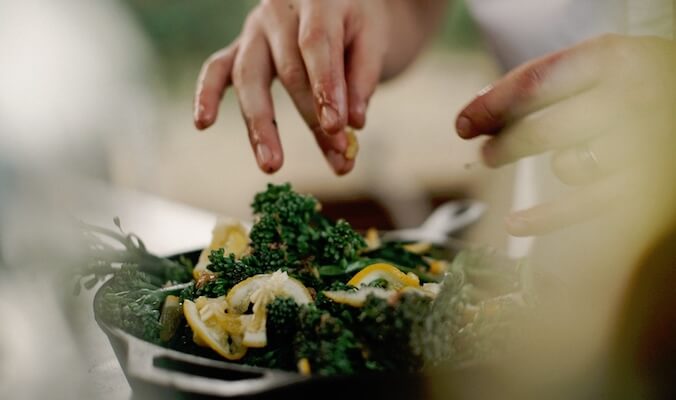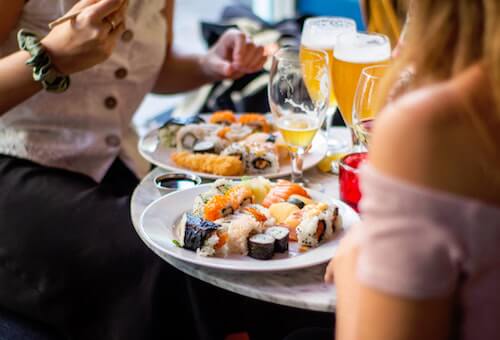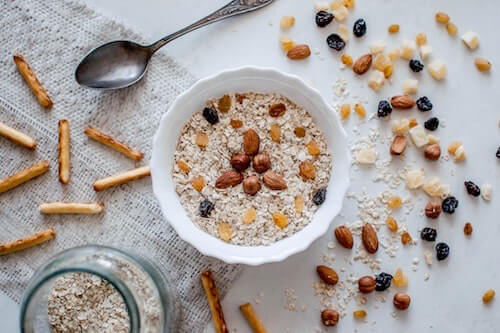How Does Heat Affect the Vitamins in Your Food?

© Max Delsid
Eating raw foods is a very popular diet trend that is considered to be the healthiest way to consume vegetables, fruits, and even meats. Many people think that cooking destroys vitamins in foods. However, not all vitamins are destroyed during heating. Below are ways that heat can affect vitamins and how to save the nutritional content of foods.
Vitamins and Cooking
Vitamin A
Vitamin A is essential for the immune system, vision, and cell recognition. It’s found in liver, garlic, butter, broccoli, seaweed, carrots, tomatoes, green onions, and dill. Cooking destroys up to 30% of its biological properties. Vitamin A is especially destroyed during frying and drying. This vitamin is well preserved during the sterilization which has a heat treatment of approximately 248°F.
Vitamin B1
Vitamin B1 helps prevent complications in the muscles, heart, stomach, and nervous system. It’s contained in oatmeal, millet, pork, liver, buckwheat, and pasta. It is especially sensitive to cooking and can lose up to 42% of its benefits during frying and up to 30% during stewing. This vitamin loses its properties at a temperature of over 248°F.
Vitamin B2
It maintains a healthy liver, eyes, muscles, nerves, and skin. Liver, mushrooms, chicken eggs, and goose are the best sources of vitamin B2. When boiling any of these foods, you can lose up to 43% of the useful properties of this vitamin. Therefore, you can use other cooking methods such as stewing. Vitamin B2 loses only 10% of the biological activity during stewing.
Vitamin B6
This vitamin is quite important for heart health. If you don’t consume such foods as beans, tuna, mackerel, sweet pepper, chicken, spinach, and white cabbage, you may require cardiac screening to check your heart health. This vitamin is very resistant to the effects of high temperature, therefore you can boil any of the listed products. This cooking method is quite beneficial for foods containing this vitamin since B6 releases its active components.
Vitamin B9
Vitamin B9 or folic acid prevents cancers and is essential for pregnant women. The vitamin is found in liver, beans, spinach, broccoli, barley, porcini mushrooms, and champignons. It doesn’t tolerate any cooking method and loses up to 90% of its properties.
Vitamin C
It is a strong antioxidant that normalizes blood pressure, lowers heart disease risk, and protects memory and cognitive function. Rosehips, sweet peppers, cabbage, oranges, lemons, garlic, and spinach are rich in vitamin C. We usually eat these foods raw, which is good since boiling destroys up to 90% of this vitamin, while stewing destroys only 50%.

Vitamin D
Vitamin D reduces the risk of multiple sclerosis, fights depression, and boosts weight loss. We mostly get vitamin D from the sun, but it’s also contained in sea bass, liver, chicken eggs, and butter. Vitamin D tolerates cooking, only if the temperature doesn’t exceed 212°F. Exposure to oxygen completely destroys this vitamin, therefore you can use sterilization.
Vitamin E
Vitamin E is a great antioxidant that protects your cells from damage and keeps your immune system healthy. It’s found in rosehips, salmon, zander, wheat, dried apricots, prunes, oat, and barley groats. Cooking can’t destroy this vitamin, however direct sunlight can.
Vitamin PP
Vitamin PP boosts levels of good cholesterol, brain function, and improves skin function. is contained in poultry, rabbit, beef, fish, and liver. It tolerates any heat treatment, canning, and freezing. Products containing vitamin PP will lose from 5 to 40% of its beneficial properties, no matter how they are cooked.

How to save the beneficial properties of products?
In order to prevent vitamin loss during cooking, it’s important to:
- Control the temperature which shouldn’t exceed 212°F. This temperature will destroy pathogens and save essential vitamins.
- Minimize heating time.
- Steam or bake vegetables and try to avoid frying.
Each subsequent heating reduces the benefits of vitamins. Try not to freeze foods and do not store them for too long.



